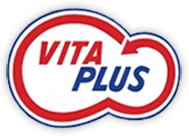
Using high-oleic soybeans in automated milking systems
 By Laura Zagorski, Vita Plus dairy nutritionist
By Laura Zagorski, Vita Plus dairy nutritionist
Our consultants are involved in numerous discussions with producers about high-oleic roasted soybeans in dairy diets. This feed may be particularly interesting to farms using automated milking systems (AMS).
Because the feed table allows AMS farms to target feed based on stage of lactation, these soybeans can be fed in both the partial mixed ration (PMR) and in the robot. In particular, feeding high-oleic soybeans in the robot at varying levels from fresh cows through peak production can aid in improving energy balance, body condition and persistency through peak lactation.
Why high-oleic soybeans?
High-oleic soybeans contain approximately 70% or greater oleic acid compared to only 2% oleic acid in traditional commodity soybeans. Oleic acid is less likely to contribute to milkfat depression than typical fatty acids found in conventional soybeans. Moreover, increased milk volume and milkfat can be observed in herds feeding roasted high-oleic soybeans. Roasted high-oleic soybeans also are a great source of rumen-undegradable protein (RUP) and can significantly increase the energy density of a lactating ration due to their high fat content.
Roasting
Under-roasting and over-roasting are both inefficient means of utilizing this feedstuff and will affect the quality and availability of the RUP content. Under-roasted soybeans are also problematic due to urease activity, making them risky to feed in conjunction with urea. Regardless of whether roasting is done on-farm or through an outside vendor, use a Protein Dispersibility Index (PDI) lab test to monitor the quality of your roasting. Test the soybeans quarterly, when feeding any new crop beans, when seasonal fluctuations occur or when changes in the roasting output are necessary.
The PDI test is also a great tool to help achieve consistency when feeding high-oleic soybeans in an AMS system. Cows can detect changes in roasting quality. Abrupt changes can result in lowered milking frequency, lowered refusals, increased rest feed and/or more feed accumulated in the feed bowls that must be cleaned out.
Feeding
When feeding high-oleic roasted soybeans, grinding is necessary to yield the full scope of an energy-corrected milk (ECM) response. In a robot setting, splitting the soybeans between the robot feed and PMR is likely necessary to feed levels greater than 8% of dry matter inclusion.
Particle size is important:
- Ground too coarse: Passage of undigested soybeans through manure and lower milk yield response
- Ground too fine: Challenges in flowability and palatability through the robot
Field experience indicates that a particle size of 1,000 to 1,500 microns with good particle uniformity feeds well through the AMS (this can vary based on other feed products used in conjunction with the soybeans). It’s also a good idea to screen soybeans coming out of the bin to exclude any foreign material and to minimize dustiness.
When incorporating high-oleic soybeans into a robot feed table, they will likely displace something else. When replacing something like a pellet, we must keep in mind cows cannot eat finer-ground materials fast. The combinations and total allotments in the feed table need to reflect this change in eating speed. This is also where a slightly higher micron size can help ensure that cows can consume product fast enough to push higher levels of soybeans inside the robot. A good option is to set up the roasted high-oleic soybeans as a second feedstuff in the robot and target it toward cows on the front end of their lactation.
Optimal feeding rates can vary between forced-flow and free-flow systems. Specifically, in free-flow systems, many factors affect cow movement. We know it is critical to balance rations that motivate cows to get up and eat frequent meals throughout the day. This quick return to eating also drives movement to the robot for milking. Because soybeans allow us to safely feed higher overall fat levels in lactating rations, they have the potential to reduce cow movement in free-flow traffic situations if rations are not balanced correctly. Your nutritionist should find the optimal balance point of dietary starch, fat and fiber.
As roasted high-oleic soybeans gain more attention and adoption in the industry, consider how they may find a place on your farm. By identifying an ideal combination of PMR and robot concentrate feeding, you may realize great opportunity for purchased feed cost savings, higher feed efficiency and improved ECM, all while maximizing the management of your automated milking system.
This article was originally published in the April 14, 2025, issue of Progressive Dairy. Click here to read the original article.
| Category: |
Crop varieties Dairy Performance Equipment Milk production and components |

